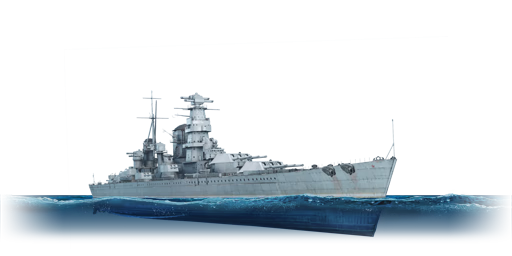The Kronshtadt was an incomplete Soviet battlecruiser (officially designated a "heavy cruiser") built under the Soviet Navy's Project 69. The first iterations of the Project 69 design were drafted in the mid-1930s in the form of a heavy cruiser intended to defeat treaty cruisers of other naval powers. Over several years, the project evolved and grew in size and displacement, ultimately resulting in a 41,540-ton battlecruiser configuration. Kronshtadt's construction began in 1939, but soon after the German invasion of the Soviet Union permanently halted construction of the Project 69 ships. After the conclusion of the Second World War, the Project 69 design was ultimately considered obsolete as well as economically infeasible, and the Kronshtadt was subsequently scrapped.
The Kronshtadt was introduced in Update "Danger Zone" and is a unique battlecruiser in the Soviet tech tree. She stands out from other Russian and Soviet capital ships with her high speed and fast reload, making her very well-suited to hunting down cruisers. In addition, the main 305 mm guns of the Kronshtadt also have exceptionally good muzzle velocities, and therefore the AP shells have good penetration at close range. The Kronshtadt also has a significantly better AA suite compared to the Sevastopol and Imperatritsa Mariya class dreadnoughts, though her protection isn't increased compared to the aforementioned dreadnoughts; while the armour is largely resistant to cruiser-calibre gunfire, it does not fare as well against other capital ships. That being said, the hull of the Kronshtadt is spacious and provides decent survivability despite the relatively middling armour plating of the ship.














